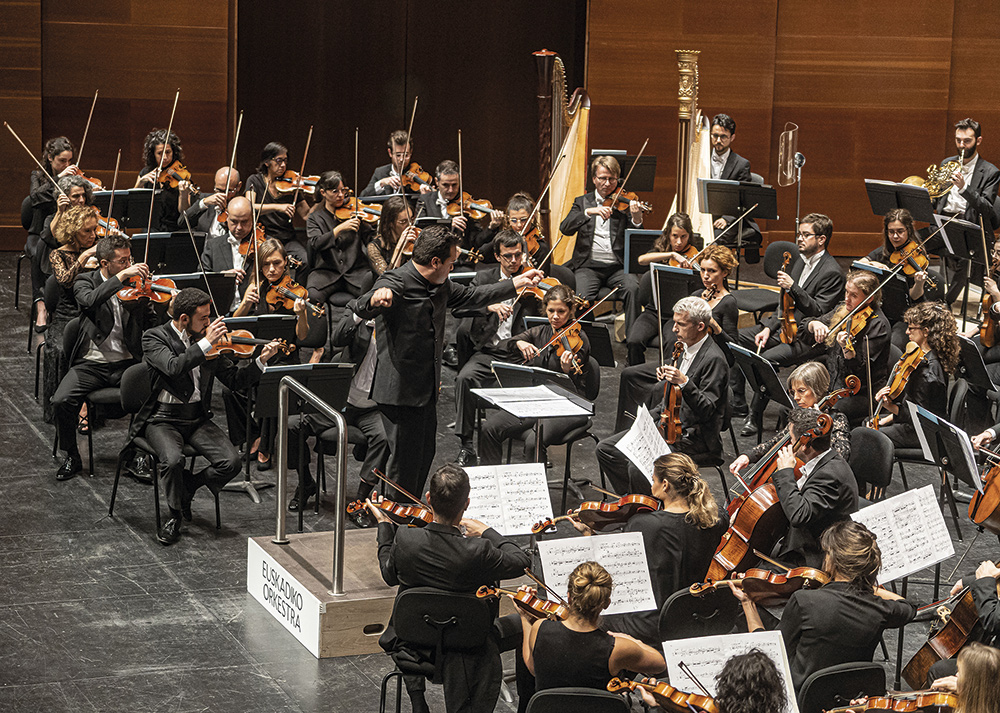

In the last concert of the Orchestra of the Basque Country, Handia, which referred to the two works that made up the program, the contrast of styles and the opposition to the sound experiences was undoubtedly the most attractive of the meeting.
To begin with, we had the opportunity to hear the latest work in charge of the Elkano project: Mundubira musika bidelagun. This project has been completed with the works of Mikel Chamizo, Mikel Urquiza, Joel Merah and Teresa Catalan to commemorate the 500th anniversary of the first circumnavigation, the largest. On this occasion the work of closing the cycle has been the piece Lorratz by Zuriñe Gerenabarrena. It's a work full of suggestive textures. As the composer himself pointed out, it is a score full of explorations and feelings. This work leaves the taste of "discovery." Elkano would certainly experience that feeling. The Basque Orchestra performed a delicate task, highlighting the textures of music, characterized by the clarity and transparency of the sounds.
Then, after this brief initial work, came the "largest" work, which we could say impressive by its size. In fact, Anton Bruckner's 8th Symphony, with 80 minutes in duration, is one of the greatest symphonies in music history.
This great work was the result of the undesired and insecure composer. After the success of the seventh symphony, this eighth symphony was rejected by one of the orchestra directors most admired by Bruckner, Hermann Levi. That brought him a lot of sadness and depression. But the Austrian, far from being discouraged in his work, continuously improved and changed the work, taking into account the criticisms transmitted by Levi. Finally, he premiered his work in Vienna before Christmas in 1892. And the success was huge. It is a Wagnerian work in its sonority, but its architecture comes from Beethoven, more acclaimed from his ninth Symphony.
As in the case of the work of Gerenabarrena, the Orchestra of the Basque Country, under the direction of Robert Treviño, carried out a concrete work from the point of view of sonority and even of psychology in the knowledge to recreate the moods that are felt in each symphonic movement. I would particularly highlight the atmosphere achieved in Adagio, which was cruel and heartbreaking in this interesting version.